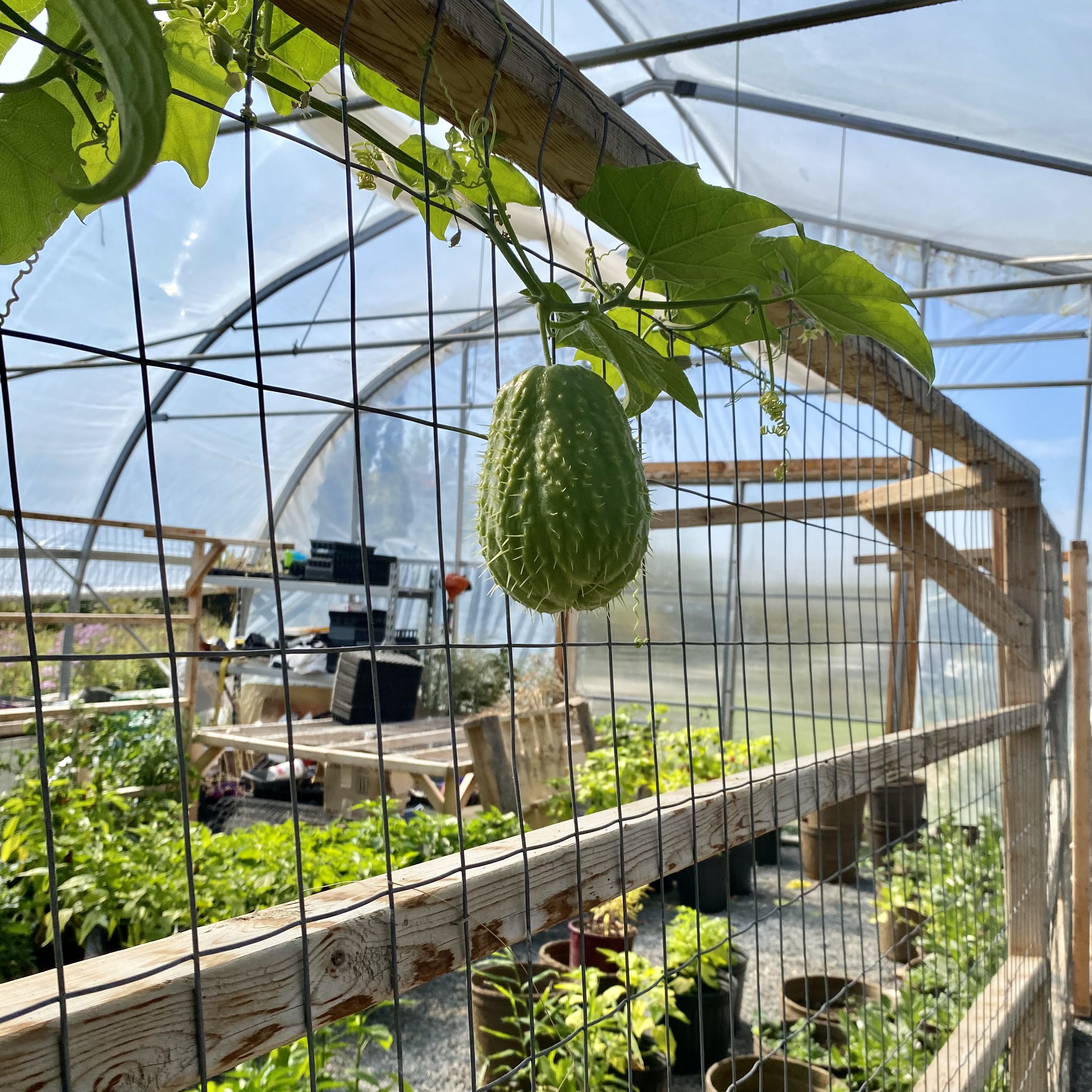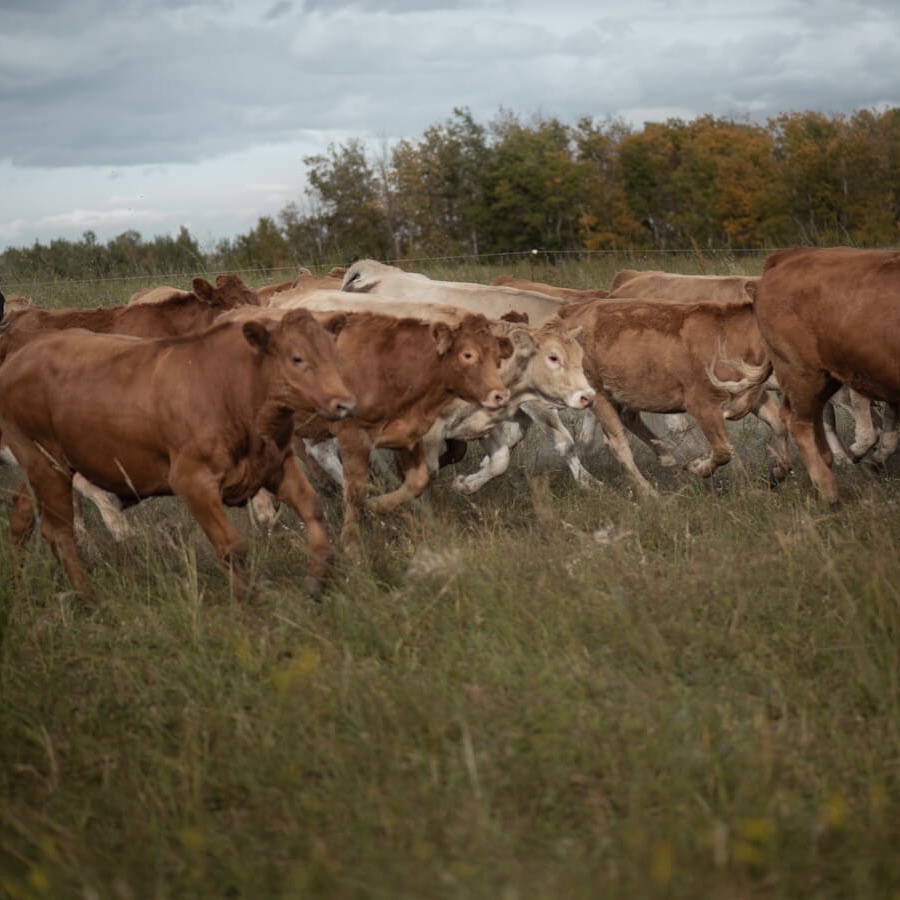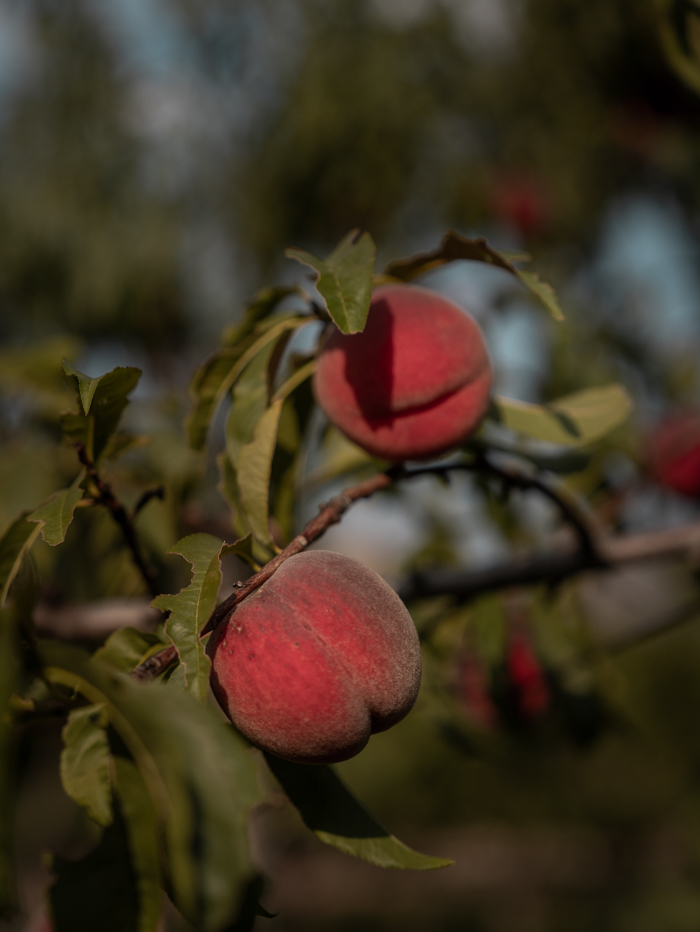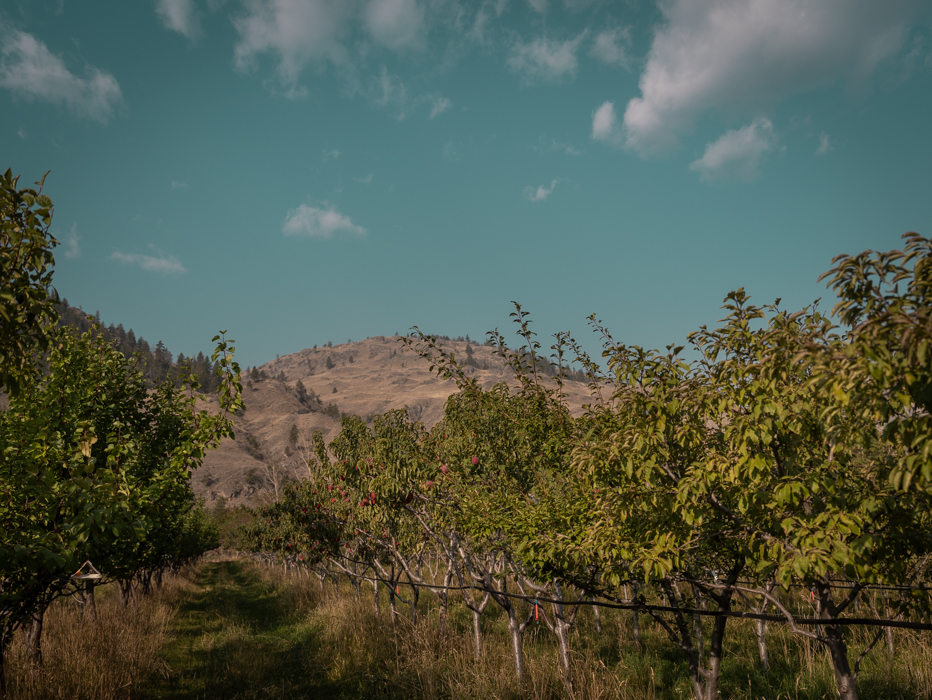As humans, our actions are influenced by many factors, including our environment, community, and financial circumstances. In regenerative landscape management, understanding context begs questions like: Does the crop choice match the growing climate? Who is involved in the farming operation? Being aware of the context in which an agro-landscape is managed can help us recognize obstacles or opportunities for improvement.
Welcome to the inaugural post of the Stories of Regeneration blog series!
We are delighted to have you follow along on this journey where we traverse the verdant landscapes and meet the passionate people reshaping Canada’s food systems through regenerative agriculture.
This 10-part series celebrates Canada’s rich food systems and the transformative power of regenerative agriculture by highlighting the farms from our cross-Canada Stories of Regeneration summer tour.
Canada’s agriculture is as diverse as its landscapes, with varying climates, soil types, and crop varieties. These featured farms represent the very essence of regenerative practices in action, and their stories are both inspiring and educational. Alongside these blog posts, we will take you on a cinematic adventure with podcasts and short films, and deepen your understanding with an insightful webinar series.
Thank you so much for embarking on this journey with us to gain insights and celebrate the unsung heroes of our Canadian soil: the farmers and ranchers who stand as champions in finding and implementing solutions to mitigate climate change.
Understanding Regenerative Agriculture
Here, the term “regenerative” refers to restoring land, ecosystems, and communities to optimal health, with a focus on soil health, biodiversity, ecosystem functions, human well-being, and the climate. Rooted in Indigenous and peasant knowledge from all over the world and supported by modern science, regenerative agriculture practices involve cultivating an understanding among producers and land stewards, emphasizing soil care and interconnections.
By adopting practices like cover cropping, crop rotation, intercropping, reduced tillage, integrating livestock, and increasing biodiversity, farmers are rebuilding soil fertility, carbon sequestration, and water retention while making their farms more resilient. The benefits extend beyond individual farms, potentially revolutionizing food production, and fostering collaboration between farmers, scientists, and policymakers to promote innovation.
It’s a movement that unites ecosystems, producers, chefs, scientists, and conscious consumers alike. Each blog post in this series peels back the layers of regenerative agriculture, revealing the ten guiding principles of regenerative agriculture that drive Regeneration Canada’s mission. With every article, we’ll uncover a new layer of insight into the transformative world of regenerative agriculture.
Why Context Matters
Let’s start by focusing on a pivotal aspect of regenerative agriculture: understanding the context. Context refers to the unique circumstances shaping how we perceive and respond to a situation. It encompasses factors such as climate, soil type, farm size, community, finances, personal values, and goals—a tapestry of influences that shape each farmer’s regenerative journey. Comprehending this context is crucial as it directs the approach to transformation.
Questions that arise include: Who manages the farm? Is it a solo endeavour, a family effort spanning generations, or something in between? Which crops thrive in this specific soil and climate? What values guide the land steward? What are their future aspirations, and how do they make decisions? This understanding unravels the motivators and barriers influencing the adoption and adaptation of regenerative practices tailored to the farm’s specific context.
Context Across Canada

This summer, Regeneration Canada visited 10 farms in 8 provinces. From the vast plains of Manitoba to shared land in Ottawa, the context differs radically. For example, Ryan Boyd of South Glanton Farms near Brandon, Manitoba, works alongside his family and a full-time employee, grazing cattle and growing grain on hundreds of acres of land. His primary motivation is to provide his young children with a vibrant rural upbringing.
Contrastingly, Sun Shan of Chi Garden runs her farming operation with her partner Li Bo on shared land at Just Food Community Farm in Ottawa, Ontario. For the two-person operation, the primary motivator is to encourage people to be creative in the kitchen and recognize the cultural aspects of food.
Rachel Lightfoot of Lightfoot & Wolfville Vineyards in Nova Scotia operates her family’s vineyard and winery alongside her parents and sisters. The Lightfoots are driven by the connection between people and places, and with the help of several hired staff members, they share their family story through wine and food prepared with ingredients from the farm.
The Bolduc family from La Station organic dairy farm in Quebec is a shining example of the commitment to regenerative farming practices and the well-being of their pastured cows. The Bolducs have deeply ingrained values centered around animal welfare, biodiversity, soil health, and worker well-being, emphasizing the need to care for all forms of life on their farm. Moreover, their holistic approach extends to producing exceptional organic maple syrup and cheese.

Agriculture accounts for about 7% of Canada’s economy, with plenty of variation in farm types and sizes across the country. The average Canadian farm size by province ranges from 152 acres in Newfoundland & Labrador to 1,668 acres in Saskatchewan. As of 2021, oilseed and grain farms made up the largest proportion of farms in Canada, accounting for 34% of all farms in the country. This was followed by beef and feedlot farms at 21%.
Driven by rising consumer demand for organic products, there was a notable 32% increase in the number of farms reporting organic production in 2021 compared to the previous census. As a result, organic farms accounted for 3% of all farms as of 2021.
Across Canada, we have an impressive capacity to produce a wide variety of crops and livestock species. Our team was incredibly fortunate to experience the hospitality and passion of the visited farmers while getting a better understanding of the individual contexts that shape their unique stories.
Challenges and Opportunities: Shaping the Future of Farming
The average farm size in Canada has almost doubled over the last 50 years due to consolidation and technological advances. This rapid increase has led to a decline in smaller and mid-sized farms, which is impacting the rural landscape and regional dynamics of Canadian areas.
The situation is exacerbated by the aging farmer population, with the average age of farmers now at 56 and over 60% of operators aged 55 and older. This is a concern because there are not enough new farmers entering the field to assume the operations of their older counterparts. In 2021, only 8% of farmer operators were under the age of 35.
Escalating land values pose a significant obstacle for young farmers trying to enter the agricultural sector, making it increasingly difficult for young farmers to start their own farms. This issue is particularly concerning as it implies a diminishing influx of new talent into the agricultural sector, potentially resulting in a future shortage of skilled farmers.
In a significant breakthrough, 2021 marked the first substantial increase in female farm operators in Canada over the past three decades. Ontario reported the most female-run farms, accounting for 26.2% of the national total, followed by Alberta, Saskatchewan, and Quebec, while British Columbia has the highest ratio of female to male farm operators, with 39.7%. This notable rise can be attributed primarily to the growth of one-operator farms and is a positive development for the Canadian agricultural sector, as it brings greater diversity and new perspectives. It is also a sign that women are increasingly being recognized for their contributions to the industry.
Regional Variations

In Canada, there are ten different soil orders (Fig. 1). Each order is separated into great groups and subgroups that provide information on the parent material, and thus, the chemical composition of the soil, organic matter content, and texture.
For example, Chernozemic soils dominate the prairie region of Canada and are high in soil organic matter with limited soil moisture. As such, the prairie region is best suited for livestock and forage production as well as growing crops like pulses, oilseeds, and small grains.

Contrastingly, the Canadian shield that spreads mainly across north-central and eastern Canada is made up of mainly podzolic and brunisolic soils. Podzols provide favourable growing conditions for coniferous forests and are acidic. Brunisols are similar to podzols, but are considered superior to podzols for agricultural purposes.
Broadly classified, Canada can be divided into three distinct climatic regions: the Arctic and Subarctic territories in the north, the temperate climate prevailing in central and eastern areas, and the coastal regions flanking the Pacific and Atlantic oceans. Each of these regions boasts distinct climatic conditions, dictating the agricultural practices that can flourish.
The epicenter of Canadian primary agriculture is concentrated across the Prairies, Quebec and Southern Ontario. The temperate environment in central Canada, and land availability in the prairies make both places suitable for agriculture. Together, Quebec and Ontario account for over 40% of farms in Canada, and the prairie provinces are home to over 47% of Canadian farms and over 82% of Canadian farmland.
Why do different crops perform differently across Canada?
Factors like temperature, precipitation, and growing degree days significantly impact the suitability of certain crops in different regions.
Heat and growing degree days:
The growing conditions for crops are heavily dependent on temperature, specifically measured in growing degree days (GDD), also known as growing degree units (GDU). For example, bananas grow best at 31℃ – 32℃ and stop growing when temperatures drop below approximately 10℃. Given this sensitivity to temperature, bananas are ill-suited for the Canadian climate.
This concept extends even within Canada, where GDD requirements differ: corn typically requires 2700 growing degree units (GDU), whereas spring wheat only requires around 1200 GDUs. This is one of the reasons that Ontario, with its mild winters and hot, humid summers, is the top producer of grain corn in the country, while Saskatchewan, with its long, cold winters and semi-arid environment, is the largest producer of spring wheat in the nation.
In essence, temperature and its impact on GDD create unique niches for specific crops, both regionally within Canada and across the whole country. These variations are central to understanding the regional context of regenerative agriculture and the crops best suited to different climates.

Sunshine hours:
Much like growing degree days, the number of sunshine hours in various regions plays a pivotal role in influencing crop production. Regions with more sunshine hours typically have longer growing seasons and higher crop yields. This is because sunlight is essential for photosynthesis, the process by which plants convert carbon dioxide and water into sugar and oxygen.
For example, the Okanagan Valley in British Columbia, Canada, is known for its high number of sunshine hours. This region has a hot, dry climate with an average of 2,000 hours of sunshine per year. This makes it an ideal region for growing apples, grapes, and nut trees, which require a lot of sunlight to produce fruit.
In contrast, southern Vancouver Island and the Fraser Valley in BC offer a milder climate, accompanied by an annual average of approximately 1,500 sunshine hours. Fruit is still grown on the southern BC coast, albeit with a slightly longer time frame for certain tree fruits to mature. This region is better suited for crops like berries, vegetables and mushrooms.
This difference in fruit maturation not only showcases the remarkable diversity of Canada’s agricultural landscapes but also underscores the significance of understanding the nuanced regional contexts that shape farming practices.
Precipitation:
Precipitation also plays a pivotal role. Rice, which demands ample water for cultivation, is not well-suited to the Canadian climate. However, regions with lesser water availability, like the prairie provinces, can support crops like pulses, oilseeds, and small grains, despite their limited precipitation levels.
At the end of the day, context impacts all of us. Canada’s diverse climates and agricultural landscapes dictate the unique context of regenerative agriculture in each region. This regional context lays the foundation for understanding the crops that thrive, the methods that flourish, and the challenges that confront our farmers.
But the importance of context goes beyond just crop choices. It touches upon the intricate tapestry of influences that shape a farmer’s journey. From climate and soil type to personal values and aspirations, every factor is a thread in the grand story of regenerative agriculture.
Our exploration has just begun. The Stories of Regeneration tour highlighted the diversity of Canadian agriculture and the passion of farmers who are leading the way in regenerative practices. As we continue this series, we’ll further explore how these varying contexts shape farming approaches throughout Canada. By understanding the challenges and opportunities presented by the agricultural landscape, including an aging farmer population and the rising costs of land, we can develop context-driven solutions that lead to a more resilient and regenerative future for all.
Join the regenerative agriculture movement! Stay updated with our activities by subscribing to our newsletter and following our social media channels. We are delighted to have you on this journey with us!
If you have any questions or comments about the topics covered in this blog post, please contact our Education & Research Manager at: paige@regenerationcanada.org. If you have questions specific to the Stories of Regeneration campaign, please connect with our Campaign Manager at: alieska@regenerationcanada.org.




